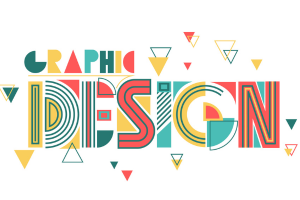Gone are the days when brands competed solely in product features or price. In 2025, brands are competing on experience. Right within this experience is where the UI UX design comes in, which lays the foundation for intuitive, seamless, and delightful digital interactions. Strong UI UX design is not optional but rather imperative, especially for modern brands that are serious about thriving in today’s fast-evolving digital world.
This guide examines what UI UX design means in 2025, why it is significant for modern brands, and how to apply it for meaningful and enduring success.
What is UI UX Design?
When you hear UI and UX together, however, they refer to completely different aspects of a digital product:
UI Design concentrates on aesthetics and layout, buttons, typography, colors, and interaction of elements seen and touched by users.
UX Design concerns the user journey through a product, which should logically be pleasant and frictionless.
Together, UI UX design help ensure that users find your digital platforms appealing from a visual standpoint and functional, intuitive, and engaging.

More Important Than Ever in 2025 UI UX Design
1. The New User Expectations Are Sky-High
Today’s users want fast, easy, and personalized experiences. There is no way now to tolerate clunky navigation or slow load times. Modern-day brands must scale up to these levels, or else the fortunate ones will pass them for better-designed alternatives.
2. First Impressions Are Digital
Most industries today have their websites/applications as the first point of interaction with a particular brand. Good UI UX design conveys the impression of professionalism, trustworthiness, and brand personality at a glance.
3. Competitive Advantage
With many businesses selling similar products and services, UI UX design turns out to be one of the competitive differentiation factors. Superior experience from using a site, mobile app, etc. makes a greater increase in customer retention, brand loyalty, and conversion rates.
Key Principles for UI UX Design in 2025
1. User-Centered Design
It’s all about the user. Doing comprehensive user research may include understanding the target audience and finding out what they need, what pain points they have, and what behavior they exhibit. Then use aspects of surveys, interviews, and usability testing to guide any of these examples of design decisions.
2. Mobile-First and Responsive Design
Given that usage of mobile devices continues to grow larger than desktops, the designs must primarily target smartphones and tablets. Use the mobile-first approach and scale out with experiences optimized for each screen size in between small and large.
3. Accessibility
The radical surety for 2025 is that technology can no longer be taken for granted. The digital world must be usable by everyone, including those with disabilities. This means sound color contrasts, keyboard usability, screen reader support, and image alt text.
4. Speed and Performance
With increased expectations in the speed of downloading interfaces, the optimization of the UI components and the backend processes would be the perfect foundation for a better load time and more responsive behavior.
5. Microinteractions and Motion Design
Microinteractions and motion design- small animations, haptics, and transitions- can significantly improve an experience.
Emerging UI UX Design Trends in 2025
1. AI-Powered Personalization
UX is now being funneled deeper into contextual AI that delivers personalized content, products customized to criteria defined by the user, and adaptive interfaces that react to the behavior of consumers.
2. Voice and Gesture Interfaces
Voice assistants and gesture-based interactions are getting deeply embedded within apps and devices. Voice UX (VUX) becomes one skill every modern brand should know.
3. Dark Mode and Customizable Themes
Dark mode goes beyond being a trend; it ensures accessibility and reduces strain on the eyes. Users expect customization at their fingertips from 2025 to have a comfort and aesthetic value in the themes of the interface they use.
4. Sustainable Design
Green users favor companies that try to reduce the digital waste in the cloud. Light UI design, optimized codes, and energy-efficient experiences point to responsible UI UX design.
5. Inclusive Visual Language
Designs should embrace diversity. Avoid stereotypical imagery; Build inclusive avatars, illustrations, and language that speak to a global audience and resonate with them.
How to Build a UI UX Design Strategy for Your Brand
1. Determine Your Brand Identity
Your UI UX design should speak for the values, voice, and characteristics of your brand. Are you playful or professional? Minimalist or vibrant? Your visual language should be as closely aligned with that as possible.
2. Create User Personas
When you create very detailed user personas, each with a description of the different segments in your audience, you ensure that the design decisions are made with real user needs in mind.
3. Map the User Journey
Create a journey map representing users’ interactions with your brand at various touchpoints. Identify friction points and optimize those interactions.
4. Design Wireframes and Prototypes
Start out creating wireframes to define structure and layout, and progress toward interactive prototypes. All will play a role in validating ideas early on while reducing costly design mistakes.
5. Usability Testing
Testing is essential. Observe real users interacting with your design to pinpoint difficulties. Iterate based on feedback to improve the overall experience.

Essential UI/UX Design Tools in 2025
Figma: Real-time collaboration and prototyping.
Adobe XD: Advanced prototyping with voice and animation support.
Sketch: Popular for UI design and vector editing.
Webflow: Great for designers who want to build websites visually.
Hotjar: Behavior analytics and heatmaps.
Maze: Remote testing and user research.
These tools facilitate smooth design process improvements, simple collaborations, and better user insights.
Measuring the Success of Your UI UX Design
You cannot improve what you do not measure. Key performance indicators are:
Conversion Rate: How effectively does the UI UX compel users to act?
Bounce Rate: Do users run away after looking at just one page?
Time on Site: Attractively designed interface keeps users coming back.
Customer Satisfaction Scores (CSAT): Surveys for gaining user feedback.
Net Promoter Score (NPS): A Measure of the ability to retain users based on experiences.
Use A/B testing and analysis to continually optimize the design based on actual data.
The Future of UI/UX Design: What Will Happen After 2025?
The next frontier of UI UX would be the fusion of the physical and the digital spheres:
AR/VR Interfaces: Augmented and virtual realities, after all, will demand a spatial UX for the design.
Neuro-UX: Design according to brainwave feedback and cognitive load.
Emotion-Aware Interfaces: Uses facial recognition and sentiment analysis to personalize the experience during usage.
Advancing UI UX design demands lifelong learning, experimentation, and adaptation to different technology changes and user expectations.
Conclusion
UI UX designing would no longer be a support function but a strategic business driver in the year 2025. Thoughtful and user-first design will give a competitive edge in the digital world to those brands that have it. Excellent UI UX design is a game-changer for how consumers interact with your brand, be it online, through an app, or via a digital product.






